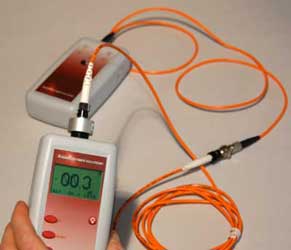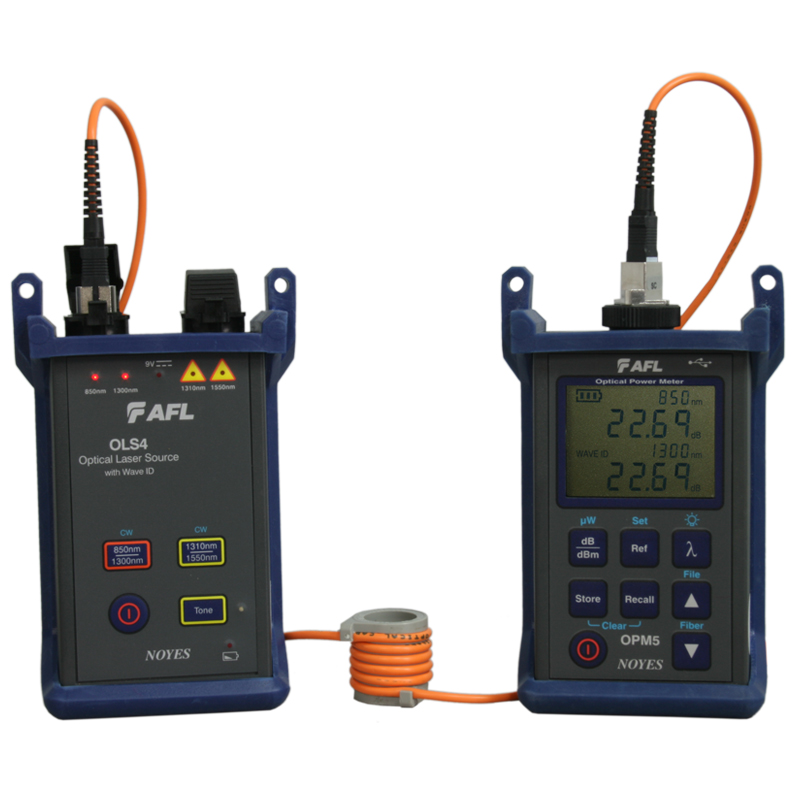Learn about the latest advancements in ofda solutions for precise fibre analysis.
Wiki Article
Discover the Significance of Optical Fiber Testing in Modern Telecommunications
In the realm of modern telecommunications, the importance of optical fibre testing can not be overemphasized, as it offers as the foundation for making certain network integrity and efficiency. What are the specific advantages that regular testing deals, and exactly how might it shape the future landscape of telecommunications?
Comprehending Optical Fiber Testing
Optical fiber testing is an important procedure in telecoms that makes sure the honesty and efficiency of fiber optic networks. This testing encompasses a series of procedures designed to review the physical and functional characteristics of optical fibres - optical fibre testing equipment. Secret parameters analyzed include optical power loss, data transfer capacity, and mistake location, which are crucial for preserving high-quality interaction web linksThe screening process normally involves using specialized devices such as Optical Time-Domain Reflectometers (OTDR) and Optical Power Meters. OTDRs are used to identify and identify mistakes, entwines, and adapters within the fibre, while power meters determine the transmitted light signal toughness to ascertain effectiveness.
Moreover, testing is carried out at numerous stages, including throughout installment, maintenance, and troubleshooting, to guarantee that the network fulfills industry requirements and functional needs. Compliance with standards set by companies like the International Telecommunication Union (ITU) and the Telecommunications Sector Organization (TIA) is critical.
Benefits of Regular Checking
Normal testing of optical fibres returns numerous benefits that significantly improve network integrity and performance. One of the key benefits is the very early discovery of prospective concerns, such as breaks or degradation in the fiber, which can cause costly downtime if left unaddressed (robotic vision). By determining these problems proactively, telecoms suppliers can decrease service disturbances and guarantee constant connection for their clientsIn addition, routine testing assists to maintain the stability of signal top quality. As optical fibers age, their performance can be influenced by variables such as ecological problems and physical anxiety. Regular evaluations enable for the tracking of signal loss and general transmission effectiveness, making sure that the network runs at optimum degrees.
One more considerable benefit is compliance with industry requirements. Regular screening supports adherence to governing requirements, therefore alleviating lawful and monetary threats associated with non-compliance. In addition, it enhances the general life-span of the fibre framework by facilitating prompt upkeep and repair work.

Common Checking Approaches
Evaluating optical fibres uses various approaches to guarantee the honesty and performance of telecommunications networks. Among one of the most usual techniques is Optical Time Domain Reflectometry (OTDR), which examines the whole size of the fiber by sending out a pulse of light and gauging the representations brought on by imperfections or breaks. This method provides comprehensive info regarding the place and intensity of mistakes.One more common technique is making use of Optical Power Meters, which determine the quantity of light transferred with the fiber. This method assists figure out the loss of signal stamina, making sure that it satisfies market requirements. Furthermore, Visual Fault Locators (VFL) are employed to recognize breaks or extreme bends in the fiber by forecasting a visible laser light into the cable television.
Insertion loss testing is also crucial, as it quantifies the loss of signal power resulting from links and mates within the network. The use of Polarization Setting Diffusion (PMD) testing assesses the influence of fibre characteristics on signal integrity.
Each of these approaches plays an essential optical fibre diameter analyser function in maintaining the efficiency and dependability of optical fiber networks, inevitably adding to smooth telecommunications procedures.
Influence On Network Efficiency
The integrity and efficiency of optical fibre networks directly affect overall network performance. In modern-day telecommunications, the efficiency of information transmission depends greatly on the quality of the optical fibres used. Any type of degradation in the fiber's problem-- whether as a result of physical damages, contamination, or too much bending-- can cause raised attenuation and signal loss, dramatically influencing information integrity and rate.Routine optical fiber testing is important to determine and fix possible concerns before they materialize as network failings or stagnations. Methods such as Optical Time Domain Name Reflectometry (OTDR) and insertion loss testing make it possible for service technicians to determine the performance of fibre web links precisely. These examinations not just assess the physical condition of the fibers however likewise ensure compliance with industry criteria, therefore guarding the network's integrity.
Additionally, a well-maintained optical fiber network adds to decreased functional costs and improved customer contentment, as end-users experience less interruptions and greater data prices. Eventually, the emphasis on rigorous optical fibre testing practices functions as a keystone for sustaining durable telecoms framework, guaranteeing that company can fulfill the growing demands for data transfer and connectivity in today's digital age.
Future Trends in Checking
As we look in advance, improvements in innovation are positioned to improve optical fiber testing in telecoms. The increase of automation and man-made knowledge (AI) is anticipated to improve the effectiveness and precision of screening processes. Automated screening systems can carry out comprehensive evaluations with marginal human treatment, considerably decreasing the capacity for errors and accelerating time-to-deployment.Additionally, the combination of artificial intelligence algorithms will enable anticipating maintenance, enabling network service providers to visualize prospective issues before they rise into failures. This positive approach not just enhances network reliability however likewise enhances functional prices.
Another emerging pattern is the growth of portable testing gadgets that use real-time analysis - optical fibre diameter analyser. These gadgets will certainly equip technicians to carry out on-site diagnostics rapidly, facilitating quicker resolutions and enhancing service quality
The growth of 5G networks even more demands the development of screening methodologies. As bandwidth needs increase, standard screening techniques might no more are sufficient. Ingenious options such as optical time-domain reflectometry (OTDR) and progressed spooky evaluation will become essential in guaranteeing the integrity and efficiency of high-speed connections.

Final Thought
Finally, optical fiber screening is vital for ensuring the honesty and reliability of modern-day telecommunications networks. Routine screening practices not only help recognize potential problems such as signal loss and faults but also add to boosted network performance and customer complete satisfaction. As the need for smooth connectivity remains to grow, the adoption of sophisticated testing techniques will play a critical function in keeping high-quality network requirements and supporting the advancing landscape of telecommunications.Report this wiki page